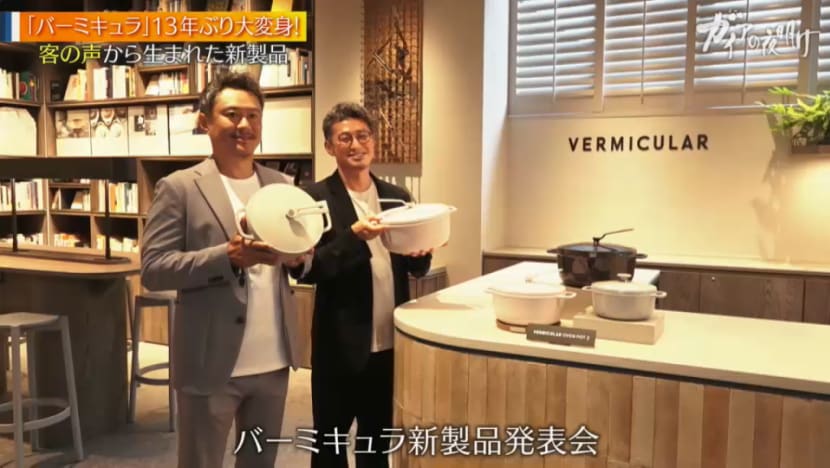Gaia Series 28: Make Your Dining Table More Delicious!
Against a backdrop of rising costs, the Vermicular brand's sustainable manufacturing practices, and Ishikawa Chuzo's diversification efforts through strategic collaborations are featured this week.


This audio is generated by an AI tool.
This week, we highlight how two companies have overcome challenges such as rising costs to grow their business with innovative strategies. We first head to Nagoya City, where the popular Vermicular Village is located. It is home to Vermicular, a brand renowned for its cast iron cookware such as enamel pots. Since they first went on sale in 2010, 630,000 units have been sold in total. The Vermicular brand is popular in American and Asian markets.
Brothers Kunihiro and Tomoharu Hijikata are the third-generation president and vice president respectively of a small family-owned sub-contracting factory Aichi Dobby, which was founded in 1936. They created the Vermicular brand 14 years ago. From 25 staff previously, the company now has 250, with net sales of around 3.5 billion yen. However, against the current backdrop of rising costs, the brothers decided to reinvent Vermicular and embark on a new endeavour.
In May 2023, the Hijikata brothers came up with a prototype of a lighter version of the company’s cast iron enamel pot. The breakthrough lies in the reduction of the pot’s thickness from three to two millimetres, promising quicker heat conduction and reduced cooking times. In June, the pot went through testing at the factory to see if it can be mass-produced. The mould used can make two pots at the same time, but the test was not successful as the pots ended up with large holes. So the brothers made some changes and created a new mould that makes the pot and lid together. Using this new mould, the molten iron fills the space more quickly than the mould with the two pots.
In September the new lighter and thinner Vermicular oven pot attracted a lot of interest when the company introduced its new products at the Vermicular store in Daikanyama, Tokyo. The enamel sprayed on the inside of the new pot was devised for use in frying pans. The cooking time is shorter and the pot is lightweight. It started selling in October last year.
After the success of the new Vermicular oven pot, the Hijikata siblings embarked on a new type of manufacturing to reduce costs. They started collecting old Vermicular pots from customers to “re-craft them”. They removed the enamel from the old pots, put them into a machine and broke them apart. The broken pieces are used again as raw materials for new products.
We next move on to Ishikawa Chuzo Co. Ltd, whose product's catchphrase is "the frying pan that cooks the most delicious meat in the world". It is known for its heavy cast iron frying pans and the company is located in the manufacturing city of Hekinan, Aichi Prefecture. Its frying pans weigh more than 1.7kg and are 4mm thick, whereas standard pans have a thickness of 1.6mm. But cast iron is good at conducting heat. Ishikawa Chuzo is contracted by other firms to make pipes and machine tools. It has 30 staff and net sales of around one billion yen. Its fourth-generation president is Koitsu Ishikawa.
One of Ishikawa Chuzo’s customers is Yabaton, a famous chain founded in Nagoya. It uses a teppan grill made by Ishikawa Chuzo. It retains heat very well so it keeps food warm up until the end. Since the company’s heavy frying pan series was launched about seven years ago, 70,000 units have been sold. They comprise almost 30 per cent of total sales. But Ishikawa Chuzo is also facing high costs. Cast iron factories are full of machines that require massive amounts of energy, such as metal smelting machines. The electricity bill which was four million yen two years ago has grown to 8.79 million yen despite efforts to cut energy use. Raw material costs have also seen massive spikes. Mr Ishikawa thus decided to collaborate with another company to develop a household product that would leverage his famous heavy frying pan.
Mr Ishikawa then visited a company in Shinagawa, Tokyo called Doshisha. It stocks a wide range of lifestyle goods from clothes to food. It also creates unique, original household electronics. Examples are the Circulight, which combines a light and a fan; and a foldable washing machine.
Ishikawa Chuzo and Doshisha decided to collaborate on developing a hot plate-cum-frying pan. Mr Ishikawa worked alongside Shoji Hondo from Doshisha’s Lifestyle Project Department on this project. One concern was that the handle of the frying pan was too hot, at 77.5 degrees. Mr Ishikawa roped in his company’s Manufacturing Department Manager, Hiroshi Yokoyama, in the development of the project.
Mr Hondo from Doshisha linked up with a Chinese factory remotely and worked on making improvements to the product. Mr Yokoyama, on his part, visited Ogasawara Kigata Co. Ltd. It produces most of the wooden moulds used for cast iron at Ishikawa Chuzo. Mr Yokoyama requested the factory manager, Manabu Suzuki, to create a handle mould that does not conduct heat so easily. After four months, in July 2023, the frying pan’s final prototype was ready. When tested, the handle’s temperature was significantly less hot, at 40 degrees. So the collaboration between Ishikawa Chuzo and Doshisha on the hot plate was a success. The result was two types of frying pan, a shallow one and a deep one.
Tips:
1) The new Vermicular enamel pot touts faster heat conduction and shorter cooking times
2) Doshisha creates unique household electronics such as foldable washing machines












